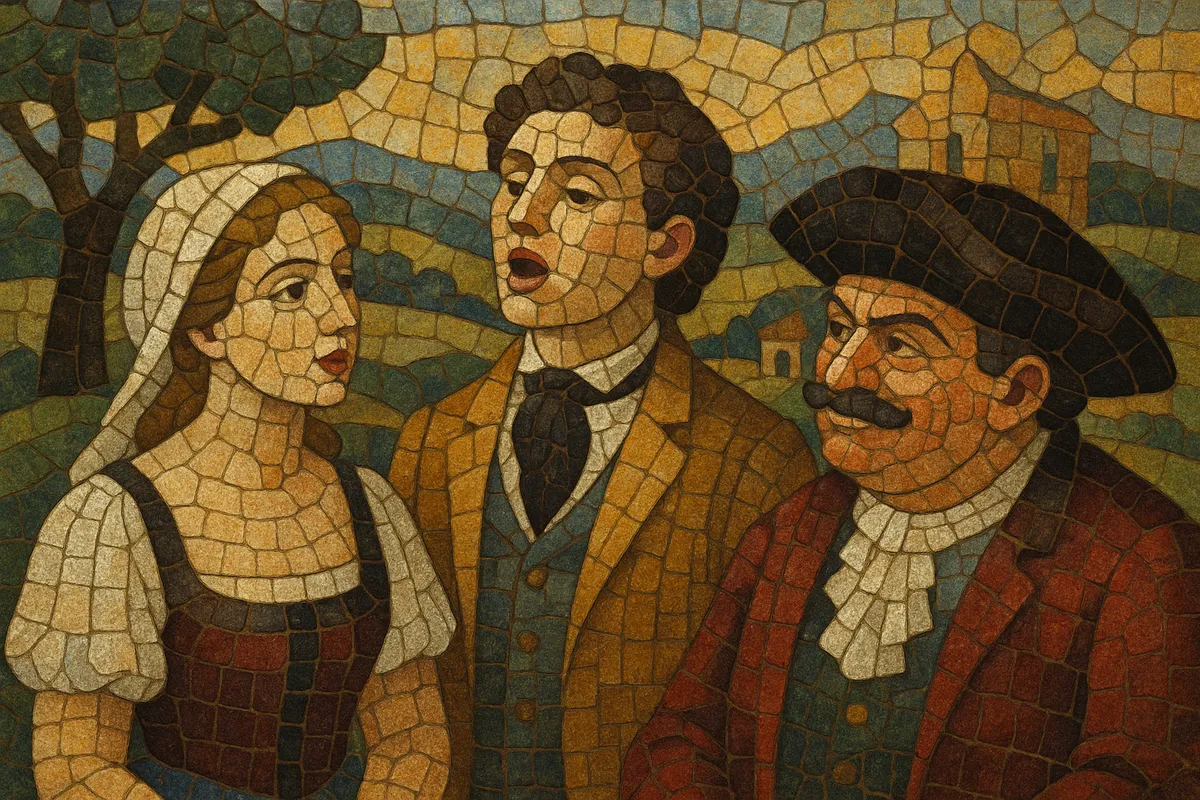Opera semiseria is an Italian operatic subgenre that blends the elevated, noble tone of opera seria with the lively wit and stock comic figures of opera buffa. Its stories often revolve around pastoral or small-town settings, endangered innocence, sudden reversals of fortune, and a rescue or reconciliation that leads to a happy ending (lieto fine).
Musically, it sits within the late Classical and early Romantic bel canto idiom: graceful cantabile melodies, virtuosic cabalettas, buoyant ensembles, and theatrically charged finales are typical. A hallmark is the coexistence of a noble soprano or tenor with a basso buffo (comic bass), allowing serious pathos and comic relief to interweave within the same drama.
Opera semiseria emerged in Italy in the 1790s as composers experimented with mixing the lofty moral gravity of opera seria and the everyday humor of opera buffa. Proto–semiseria tendencies were visible in sentimental and rescue plots popular across Europe (notably in French opéra comique), and Italian composers adapted these to Italian texts and bel canto vocal priorities. Early touchstones include Giovanni Paisiello’s Nina, o sia La pazza per amore (1789), whose tender, pastoral pathos and ultimate reconciliation exemplify the genre’s tone.
During the early 19th century, semiseria became a recognized label (often “melodramma semiserio” or “dramma semiserio”) alongside “seria” and “buffa.” Gioachino Rossini’s Torvaldo e Dorliska (1815) and La gazza ladra (1817) refined the template: peril, injustice, and suspense offset by comic characters, brilliant ensembles, and affirmative finales. Giovanni Simone Mayr and Ferdinando Paer further developed sentimental rescue narratives and hybrid dramaturgy, while the bel canto vocabulary—flowing cantabile, sparkling cabaletta, and Rossini-style crescendos—gave the music theatrical propulsion.
Vincenzo Bellini’s La sonnambula (1831) and Gaetano Donizetti’s Linda di Chamounix (1842, explicitly a melodramma semiserio) show the genre at its lyrical peak, fusing intimate village settings with exquisite vocal writing and a focus on innocence jeopardized and restored.
By the mid-19th century, semiseria’s gentle sentimentalism and lieto fine ceded ground to grander historical spectacle and, later, to the hard-edged realism of verismo. While the label “semiseria” waned, its dramaturgical mix—serious stakes tempered by humor, pastoral atmospheres, and triumphant finales—fed into lighter operatic traditions and helped shape the crossover tone that later flourished in operetta. Its works remain valued for their elegant bel canto writing, deft characterization, and theatrically effective finales.


